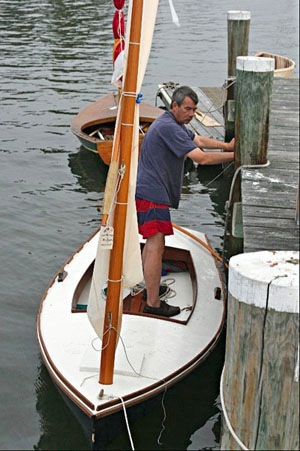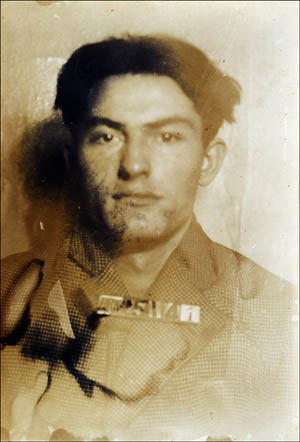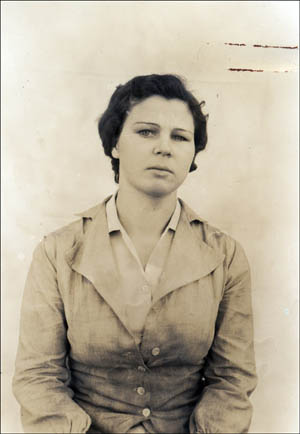“Mug Trio” from The Smoking Gun
It’s possible some of the information below is full of half-truths, exaggerations, or outright lies; it’s difficult to say. If no current photo exists, a reasonable approximation is used herewith.
This is a partial list, in no particular order, of ‘seedie people and places. I’ll try to update it from time to time. Some of these folks have useful or interesting links associated with them. Some links are not to people, just useful links. Some are just interesting people.
Is currently front runner in the “Melonseed Builder Living Farthest From a Large Body of Water” category. He’s in Montana, where the only large bodies of water are frozen in glaciers. Go figure. If there’s someone in a certain region of Wyoming or Colorado building a boat, they might have him beat, but I haven’t heard of them yet.
Tony’s built a couple of boats now. He built a beautiful wooden Melonseed in 2008 for his parents. I was in contact with him during his build, and met him when he came back east for the boat’s debut, which won Second Place for the “People’s Choice” award at St. Michaels, (would have won 1st, but rumor has it the Cortez Crew stuffed the ballet box). He posted regular photo updates during his build, which I scoured shamelessly for clues and ideas. He’s also been a bottomless well of advice and encouragement.
He recently combined everything into a beautiful little photo book you can buy through Blurb here:
It’s something you can show around and pretend you know him.
Jim “Wood Knows Where It Goes” Farrelly
As of Winter 08-09, Jim was about halfway through a lapstrake version of a Melonseed, way down south on Tybee Island. For some reason Tybee seems farther south than Florida. I used to spend some time on Tybee, and my folks live about an hour away in South Carolina, so we’re hatching various plans to get together for some marsh exploration when the boats are done. Jim likes to paddle out to the Savannah shipping lanes in his handmade kayak and challenge ocean going freighters, yelling “Starboard!” and then running for cover. He has a photologue of his progress and initiates hilarious flame wars on the Wooden Boat blog, just to get the curmudgeons in a twist.
Interesting fact about Jim: He claims to have no idea how to sail, or at least didn’t when he started building his sailboat. He fell in love with the boat first, figured he’d work out the other details later. I can relate. He’s easy to spot – a large flock of plastic flamingos follows him wherever he goes.
There’s a long story here I’ll save for another time. I got to know Doug through a writer’s group almost 20 years ago, but had only met him once. Then I discovered by chance, decades later, that he owned a Crawford Melonseed and lived only an hour away. I called him to see if I could have a look at his boat and take some measurements, and we realized we had a lot in common, in a weird Twilight Zone kind of way. He took me for one really fine sail in his boat. Then he up and moved to California. Nice. Upon arrival in California, in the span of only weeks, he and his family dodged raging forest fires, freakish storms, and earthquakes. I keep telling him it’s a sign, but he won’t move back.
For someone who seems like such a nice guy, Doug is running one of the best scams I’ve ever heard of. Somehow he convinces Fortune 500 companies to pay him lots of money NOT to work for them. I once took him deep into the Chickahominy Swamp and threatened to leave him there if he didn’t reveal his secret. All he said was “Go ahead, tro me in dat brarr patch.”
Before he got his Melonseed, Doug built a wooden boat, because he wanted to be “the kind of dad who would build a boat.” I can relate to that, too. We still keep in touch, and he has a blog at the link above. Also, he just finished writing a novel – yet another thing he does well.
Scott let me dump him in the cold Chesapeake Bay, in a storm, in November, two miles from shore, the first time we went out on a sailboat together. He clung to the mast like a cat as the boat was turning over, and I’ll never forget that. (Nor will he.) Still, with eight lives left, he later helped me retrieve and restore a 1938 Penguin (one of the originals) to do still more sailing. We brought it back from Hampton Roads in the back of a borrowed pickup truck, quite pleased with ourselves, and spent a great summer living in a cabin on the York River sailing it. Many stories associated with this guy.
He swings the ax for Vector Trio, an avant garde (if you can still say that) jazz trio based in Washington, DC, where he does illegal things with a trumpet.
Roger has somehow been involved in founding, running or expanding just about every major traditional boat museum on the East Coast, from Philadelphia to Key West. And that’s only the ones I know about. He’s like the Johnny Appleseed of small craft museums and organizations. His picture appears in an early Wooden Boat magazine article with a Melonseed he either built or stole. He redrew the design to a 15 foot length, and boats from those plans are now popping up everywhere like barnacles.
Roger is one of a handful of people responsible for the modern revival of the Melonseed, but the bug he infects people with takes many forms. The list of folks he’s sent into wild deliriums of boat building reads like a who’s who of wayward, wild-eyed and homeless men, and a few women. No matter what reasons you give him for why this is not the time to build a boat, after five minutes Roger will have you convinced you should have started yesterday. And he’s such a nice guy you’ll wish you had.
Roger was hiding out in the swamps of west Florida, reputedly starting yet another museum. Oddly enough, his link takes you to the Manatee County Clerk’s page, where you can check on the status of any recent convictions, and also apply for an “e-marriage license” – you don’t get much shadier than that. Word now is he’s escaped the steam heat of Florida for the frigid snowpack of Buffalo, New York, to kickstart yet another museum. Something Erie, no doubt.
This group is a recent example of Roger Allen’s unholy spawn. This is what happens when you mix boat building mania with a dose of radical Cuban blood. They’ve built a fleet of Roger’s 15 foot Melonseeds from various materials (including styrofoam), in addition to a small Armada of other designs, some of which they just made up. These guys make no distinction between fearless and foolish, and take great pleasure in mixing it up. Throw in some rum and things really get dicey. You have to be careful what you say around them. You say “You can’t do it like that,” and next thing you know one of them is doing it and proving you a liar.
Appears to be the de-facto ring leader, but the crew could bump him off at any time, like if he tried just once to offer one of them unsolicited advice. We do know they use his shop as a hideout, where there are rumors of nightly bacchanals and ritual naked paddling. Still, as long as you don’t offer advice, these guys will do anything for you. Dave sends out a regular taunting email blast of their exploits and those of their front organization, the Cortez TSCA. They also hold regular recruiting drives disguised as regattas.
_________________________
I don’t know what it is about this bunch, but they always seem to be in the right place at the right time, or they have really good connections. You see a photo spread in Wooden Boat of some fantastic boat renovation or new construction in the Philadelphia area, and the next time you see a picture of the boat, well, they’re on it. There are more members in the crew, but here’s a short list of known conspirators, most of whom can be contacted through the TSCA website:
May be the leader of this bunch, but as a rule the members have no respect for authority. Still, if you want to go sailing on some awesome boats, contact Tom and he’ll hook you up.
Once built a full size airplane out of plywood and flew it. He has pictures to prove it. His family must have protested, since now his projects stay closer to sea level. He obviously has an engineer’s view of the world: he took one look at a Melonseed and said “I can render that shape in 6 plywood polygons.” And he did. My guess is he never colored inside the lines in kindergarden. He’s built a half dozen or more boats in recent years, and always seems to have another in progress.
Owns what may be the only original Tom Jones version of a Melonseed. He’s been a great source of advice on matching sail size with conditions on these boats.
Has built two Melonseeds in different sizes using strip planking. He’s been a go-to guy for information on steps during construction that seem doubtful or confusing. There are several ambiguous areas on the plans, and everyone seems to get snagged by the same problems, so it’s always helpful to see how different people get past them.
______________________
What is it about guys named Roger? This Roger is owner and proprietor of Crawford Boat Building, on the shores of Cape Cod Bay south of Boston. As of Winter 2008, he has personally built and sold over 400 of his fiberglass hulled Melonseeds. If Melonseed ownership is a religion, Roger Crawford is High Priest. He’s like the Steve Jobs of Melonseeds. For this reason, perhaps more than any other single person, he’s responsible for creating a large following of people devoted to the boat, and raised awareness of the virtues of the original design. His adherence to a few basic rules – fine workmanship, quality materials, and personal pride – have assured that he always has orders waiting. When you go to pick up your boat, he serves up a dose of his special Kool-Aid, and before you know it you’re swooning and drooling, followed by late night bouts composing long rhapsodic lyric poems in praise of this little vessel on the Melonheads website.
Originally, Roger’s boats came with daggerboards, but after a few years he tried a centerboard design that proved so popular he made that model standard and never switched back. Over the years he’s tried tinkering with the original design in small ways and, except for the centerboard, came to the conclusion there was really nothing you could do to improve it. Whatever it is you want to do to “improve” a Melonseed – add lazyjacks, an extra cleat, fuzzy dice, a 50 horsepower watercooled outboard – will often draw pained but polite expressions of concern from him.
He’s a great source of knowledge and inspiration when you can pull him away from his work. A few years ago I was planning to be in Boston on business. I knew Roger’s shop wasn’t far away, and called to ask if I could stop by. As if on cue, New England then got socked in by a ferocious winter storm that flooded streets along the coast and delayed all flights. I ended up running very late. Even so, Roger stayed at the shop long after closing to meet me when most other people would have just said “Sorry, catch you next time.” When I finally arrived, he spent he better part of the evening chatting, sharing stories and giving me the full tour. It’s that kind of personal touch that has made him so popular with the owners of his boats.
Founded by a group of Roger Crawford’s early converts, known to cognescetti as “The Apostles,” the Melonheads Yahoo Group is a sort of clearinghouse for all things Melonseed. Though the most active members own Crawford boats, the site is open to owners of all makes and materials, as well as people who are not yet owners but might want to be. Lots of really great people here, and they’re located all over North America and a several other continents. The message board will keep you up to date on meetups, raids and regattas throughout the year, as well as tips on sailing, maintenance, etc..
Is building a lapstrake boat down in Texas from the Barto plans. He’s taken several classes at the Wooden Boat School in Maine over recent summers. Steve has strayed from the original plans to replace the daggerboard with a centerboard – something I plan to do, too. I’m hoping he’s finished before I get to that point; I want to see how he likes it. He also made his own sails from a Sailrite kit (see below).
Did the first fully detailed build blog for a Melonseed that I found on the web. I came across his blog just as he was finishing up and looking for sails. Many builders since have started their projects by going through his site first. Marc originally built his boat to the Barto specs precisely, but since then has ripped out the daggerboard and put in a centerboard.
Has built both 13 foot and 16 foot boats from the Barto plans, plus a smattering of other boats. It was after exchanging emails with him that I decided two small boats would work better for me than one big one.
Is proprietor of Brush Creek Yachts, down in the swamps of North Carolina. (If you haven’t noticed already, a lot of these people hang out in swamps.) His storefront is a surprisingly compatible combination of art gallery and boat showroom – they just look right together – and his workshop is in back. Marvin is a professional builder who started out as a cabinetmaker in Virginia, and it shows in the high quality workmanship in his boats. He builds and sells a wooden version of the Melonseed. He uses a lot of native swamp cypress, and gave me an appreciation of working in local woods. My daughter and I stopped by his shop one evening on the way back from Ocracoke Island. He kindly hung around until after closing time to talk boats and let us look around.
Is proof even lawyers can be nice people. Well, I assume he’s a lawyer, since he named his boat “Non-Billable Time.” He built a strip planked boat a few years ago, and also posted a photoblog of the construction. As one of the few strip built versions I could find, it’s been very useful.
(Brian’s Gallery has since gone private, but here’s a photo of his boat I still have saved.)
______________________
There are lot of commercial sites and resources on the web, and new ones show up all the time. Still, there are a few that I return to over and over again. Here’s my Most Wanted list:
A source of very extensive and free “How To” information on strip planked construction. I refer to it frequently. They have a handy Wood Strip calculator to estimate how many strips you’ll need, and have done a lot of testing on different epoxies and posted the results. They sell kits, plans, tools and materials, too. Excellent information on doing decorative inlays.
Another excellent source of information and materials. In addition to selling detailed videos and manuals on construction, they have free downloadable PDF on the basics of strip planking that’s very helpful. Even when I didn’t follow their methods at every step, I did incorporate much of their information into my own process.
Roger Winiarski is a producer of fine traditional cast bronze fittings. He does most everything right there in his shop in Rhode Island, and he does everything old school. Very salty, and a really nice guy. Don’t expect to just call and place a quick order with some anonymous switchboard operator. Often Roger will answer the phone himself, and if he does he won’t let you place and order without hearing details of the kind of project you have going. This is the way business used to be done, and it’s nice someone still does it that way. The advantage to this is since he’s heard all this information from everyone he’s a fountain of valuable tips on whatever it is you’re trying to do. There’s a picture of his Nat Herreshoff boat gracing the Home page, so be sure to ask him about it.
This is where I got my cedar strips, fiberglass and epoxy this time. They have both Canadian and US websites, so be sure you go to the right one. The US office is located somewhere in Vermont, and when you call to place an order for wood you get transferred back to the lumber shed. They’ll want to know what you’re building, too, and you’ll hear what has to be a vintage 1940′s rocking chair creaking in the background. I got a few dud strips in the shipment, but I also got a lot of extras, so I’ve been happy with the results.
Another good source for tons of useful info and supplies of all kinds. John Harris, the owner and CEO, has a fondness for sharpies, and sold me all my supplies for my first boat back before they got so big. Somehow, he’s connected with Craig O’Donnell of The Cheap Pagesfame (a source for all kinds of eclectic boating info). I met both of them in Maryland at a CLC gathering when my first boat was done. CLC specializes in reasonably priced, well designed kit boats in wood, everything from kayaks to larger sailing craft.
Stuart Hopkins – Dabbler Sails
Dabbler specializes in traditional old style sails. He does a lot of restoration and historic reconstruction work. He usually has a backlog, so order early. The loft is just down the road from where I spent summers on the water at my grandparent’s house. He does really fine work, much of it by hand. He’s done sails for Melonseeds in several sizes, and is happy to come up with a custom configuration if you want it.
If you need a good quality sail for half the price, and you’re willing to work for it, Sailrite sells kits. Last I checked they, had Melonseed patterns in two sizes. The kits come with everything you need except a sewing machine and a large room. The panels are precut and instructions are detailed. Steve Lansdowne (see above) has already made one for his boat, and says it isn’t that hard.
– ) 0 ( –
Photos of actual convicts come from Bruce Jackson‘s site “Mirrors.” While visiting a state prison farm in Arkansas, Jackson found a stack of mug shots from the early 1900′s in the back of an old desk drawer. The photos will appear in his forthcoming book Pictures from a Drawer.
From The Scream Online:
Photographs from the Arkansas State Prison 1915-1937,
found and printed by Bruce JacksonThese images are based on a group of about two hundred 3″x4″ identification photographs made between 1914 and 1937 that Jackson found in a drawer in the Arkansas penitentiary in the summer of 1975. The photographs of the men were loose in the drawer; the photographs of the women were in a small brown envelope. Most of the photographs of the men were taken inside, against a wall or a cloth; most of the photographs of the women were taken outside, near a fence, in a wicker chair. Bruce Jackson is a documentary artist presently on the faculty of University at Buffalo, where he is SUNY Distinguished Professor and Samuel P. Capen Professor of American Culture.

























Hi eye in hand. I worked with Carl Weissinger at U. of Penn when he was a grad student there. Old friends and fun times in the past but no contact for many years. If you have his email, send him mine and say hi from Jenella. thanks.
I am visiting in Deale MD and was looking up the melonseed boat at the Captain Avery museum in Shady Side.
Hi Jenella, will do.
cool, the Avery museum is interested in promoting small wooden traditional crafts according to the board member we know!